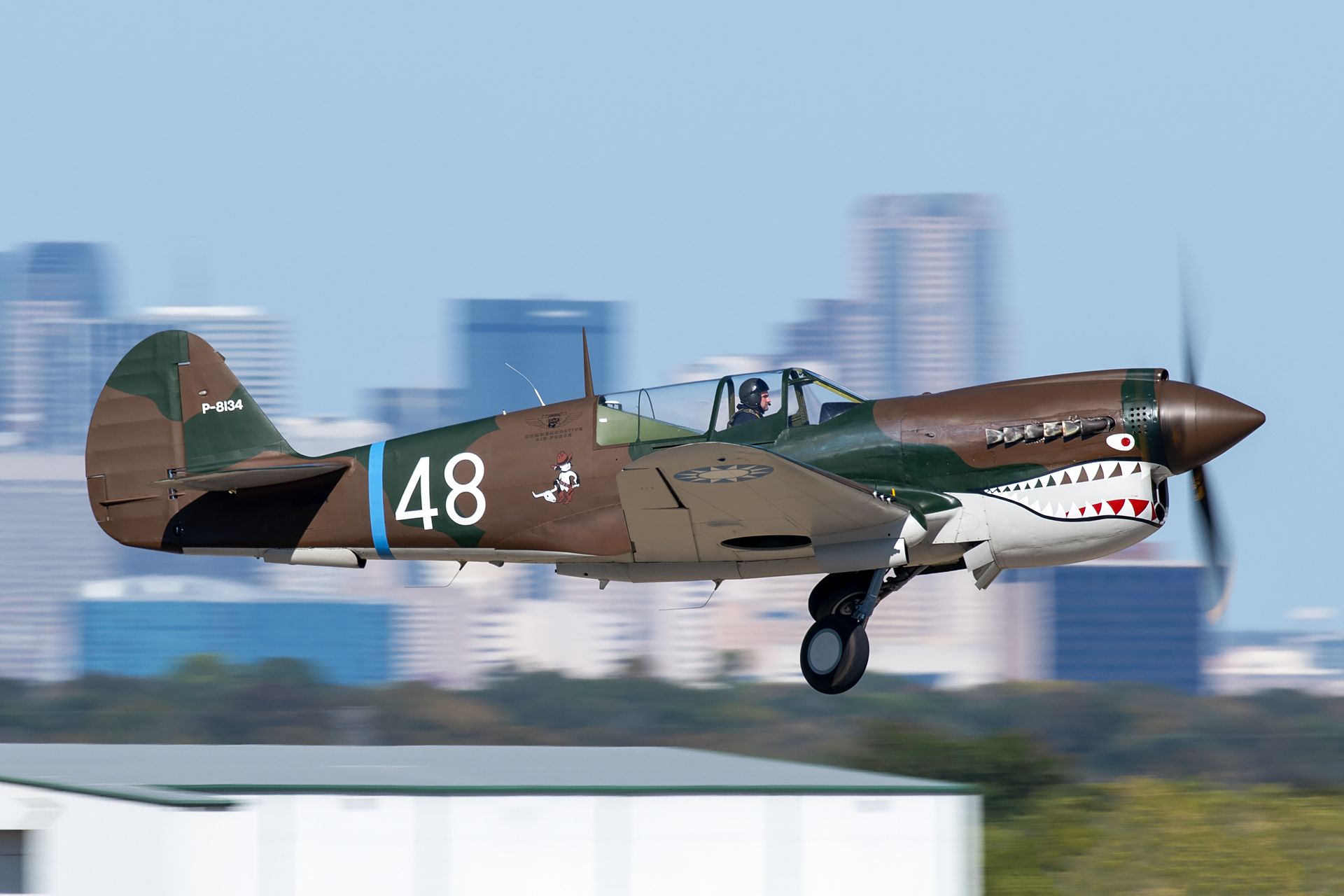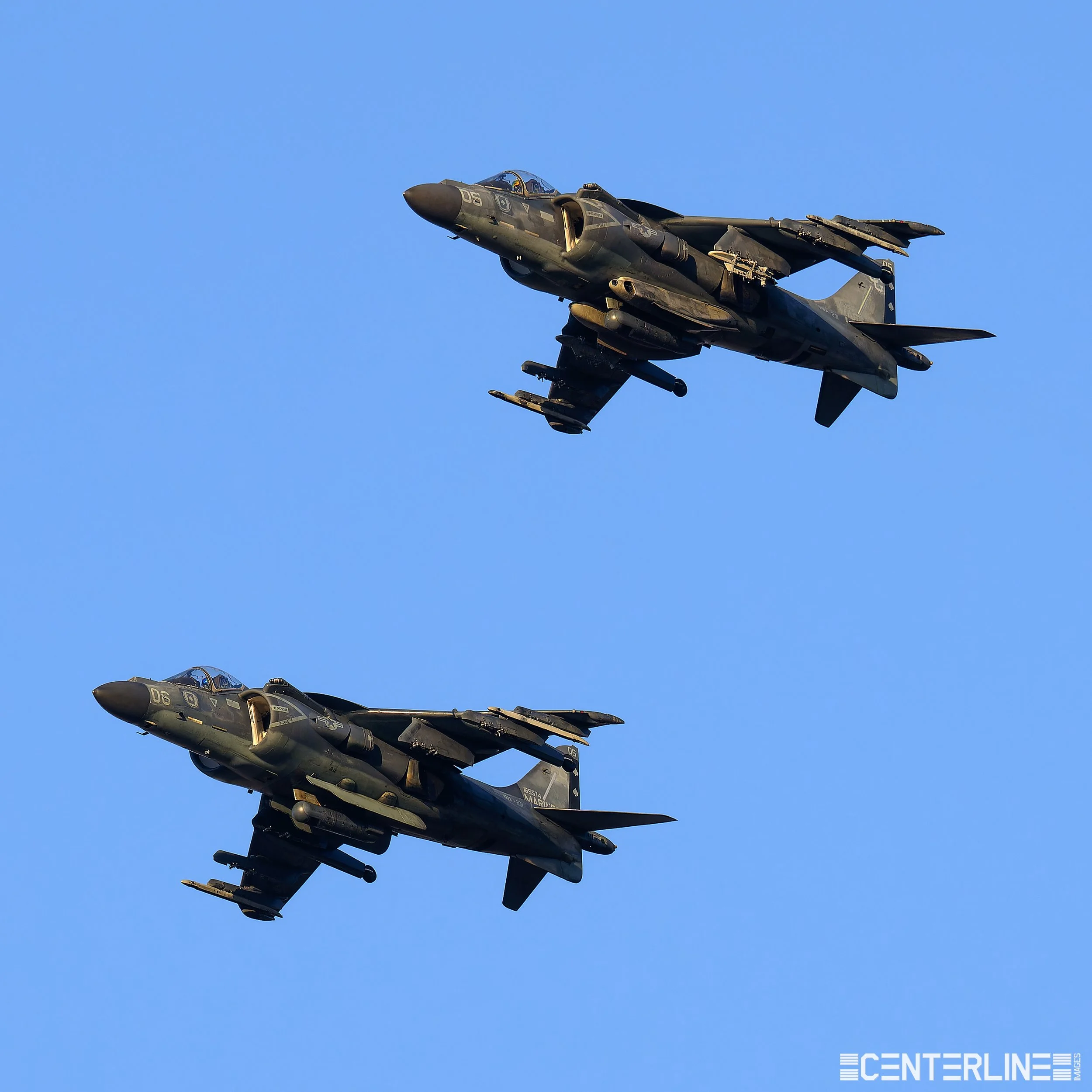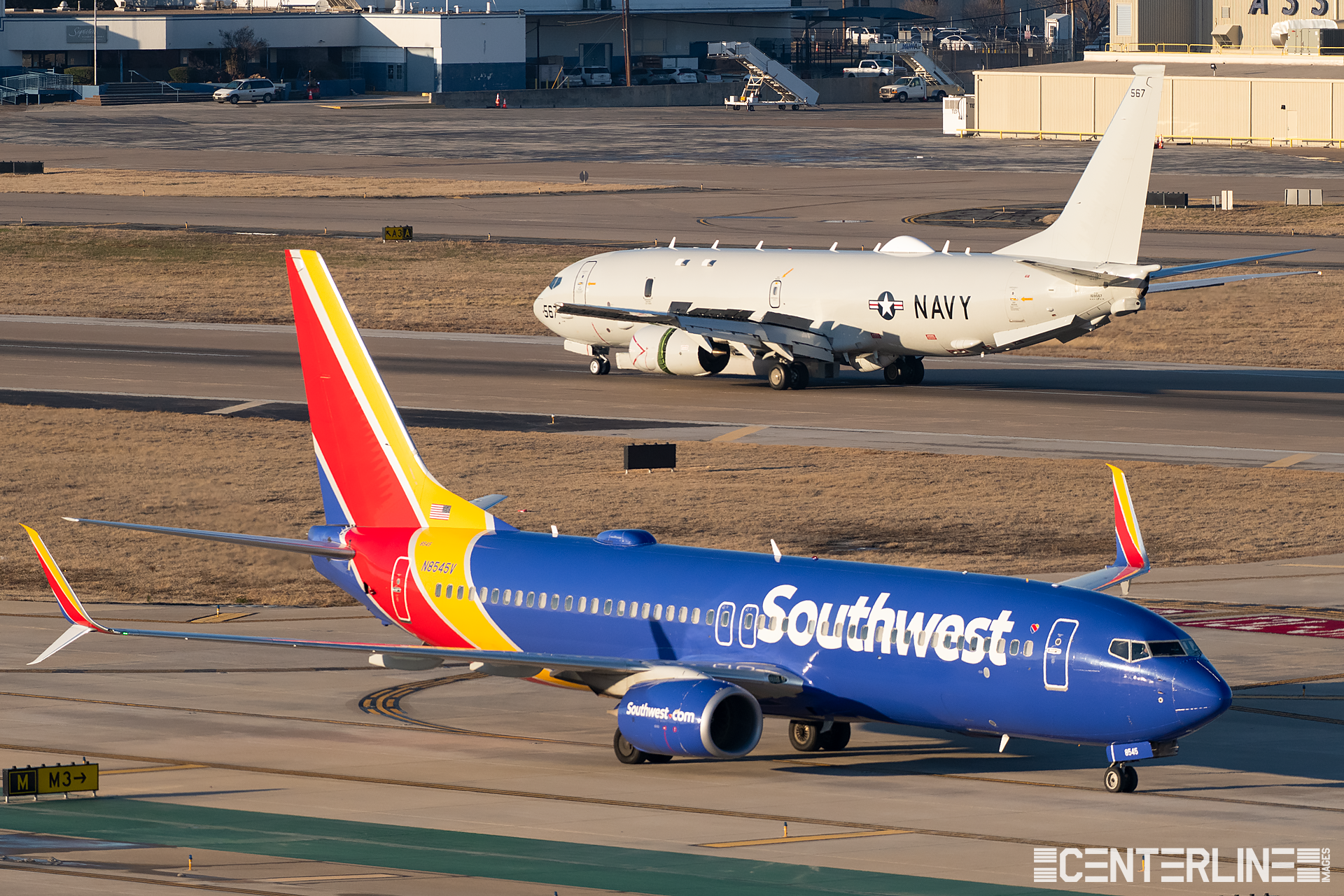
Curious on the backstory behind the photos? This is the place. You'll find not only write ups on local outings, but also reviews of major events I’ve attended.
Nearing The End Of An Era: The USMC AV-8B Harrier II
As the mighty AV-8B Harrier’s service comes to an end in the US Marine Corps, I had an unexpected opportunity to see over a dozen in action in Southern California.
Earlier this year, I found myself out in the Mojave Desert in Southern California, awaiting a historic moment—the Boom XB-1 taking to the skies for its first supersonic flight, which I had posted about on this page months ago. While awaiting that momentous occasion, a friend of mine, seeing that I was in Southern California, reached out with an unexpected heads up: one of the last large deployments to Naval Air Facility El Centro of the AV-8B Harrier II was happening simultaneously down in El Centro, a small desert town tucked away near the southeastern corner of California.
I hadn’t seen a Harrier up close in years, and this was one of the final opportunities to witness a large-scale deployment to El Centro before its retirement. As soon as the XB-1 wrapped up its flight, I hit the road, making the four-and-a-half-hour drive south. On the drive down, I crammed in everything I could about El Centro—where to go, what to expect, and most importantly, the best spots to photograph the action.
I arrived just in time to catch the golden-hour action. The second I stepped out of the car, I was hit with that unmistakable sound—the sharp, high-pitched whine of Rolls-Royce Pegasus engines idling. It immediately brought me right back to memories from airshows past. Then, as if on cue, a Harrier started taxiing out, passing right in front of me. Not just any Harrier either—I spotted the rare TAV-8B twin-seat training version, a far lesser seen variant.
Apparently seeing that rare aircraft was a good omen, because that first evening ended up being nothing short of incredible. I watched no fewer than ten Harriers in action from both squadrons, who were in town participating in Service Level Training Exercise 1-25. These jets from VMA-231 "Aces of Spades" and VMA-223 "Bulldogs," both based out of MCAS Cherry Point, North Carolina. In total, there were more than a dozen aircraft flying missions designed to prepare Marine units for operations around the globe. The exercise also gave me the rare opportunity to see many of the Harriers carrying live ammunition. Several were using water injection—a system that provides extra thrust during takeoff—making their departures noticeably smokier and even more dramatic. It's easy to forget what an incredible payload these relatively small aircraft can carry to the fight.
I ended up staying three days under the warm Southern California sun. In addition to the Harriers, the skies were buzzing with other base regulars, including the Blue Angels out for their winter training as they geared up for the 2025 air show season. As you'll see a ways down the photo set, Blue Angel #7 suffered a blown tire, and had to utilize the cable! Not something you see too often.
As I write this, VMA-231 is just a couple weeks away from wrapping up Harrier operations entirely. Being there to witness one of their final large-scale exercises felt like a full-circle moment.
We are nearing the end of an era for a truly unique aircraft.
A New Look For The Dallas Poseidon
An interesting group of mumps and bumps on this P-8A Poseidon seen landing at Dallas Love Field, including a new dorsal fairing near the tail! The aircraft is part of the classified BUPERS SDC Dallas test & evaluation unit.
"SHINR02" touching down on runway 31R at Dallas Love Field back in February after a training sortie over the Gulf of Mexico. This Poseidon is part of the secretive Dallas Love Field-based US Navy detachment BUPERS SDC Dallas/NAWC-23 and appears to have received a new dorsal fairing modification near the tail! The following information is all publicly accessible online.
The tight-lipped Dallas, Texas-based unit plays an important role in test and evaluation of advanced sensor technology such as Raytheon's AN/APS-154 Advanced Airborne Sensor (AAS), which can be seen in these photos slung underneath the aircraft. According to the US Navy, the huge pod was first flown on the P-8A Poseidon in 2015.
The AAS is a state-of-the-art radar used on the P-8 Poseidon maritime patrol aircraft. Developed by Raytheon, the AAS is an upgrade to the AN/APS-149 Littoral Surveillance Radar System (LSRS), which was designed to provide multi-function target detection and tracking as well as high-resolution ground mapping at standoff ranges covering land, littoral, and water areas.
The AAS boasts a double-sided AESA radar, offering near 360-degree coverage and the ability to simultaneously scan, map, track, and classify targets. Moreover, the radar contains a moving target indicator (MTI) that can detect, classify, and track targets on land and at sea at the same time. Synthetic aperture and inverse synthetic aperture radars generate clear, high-quality imagery of inland and ocean areas, allowing P-8 crews to profile vessels from long distances and in adverse weather conditions. The AAS can even detect the faint wakes left by submerged submarines on the surface of the ocean.
The AAS is a game changer for the U.S. military. Once a hostile vessel is identified, targeting information can be sent to another armed platform and a networked weapon can be guided to the target through a data link. As for the rest of bumps and and antennas, I could only speculate as to how they play a role, but I'll refrain.


























































































